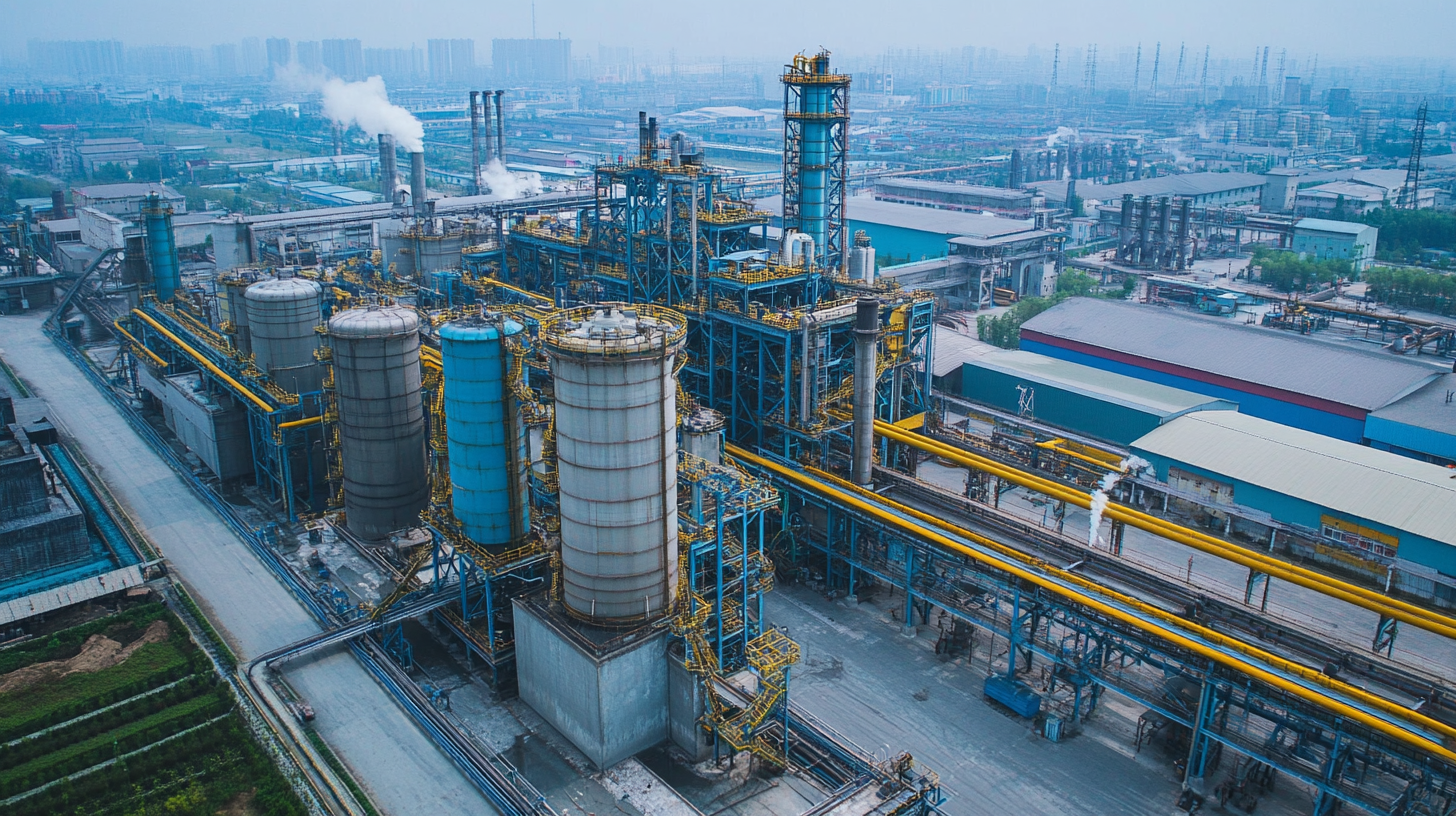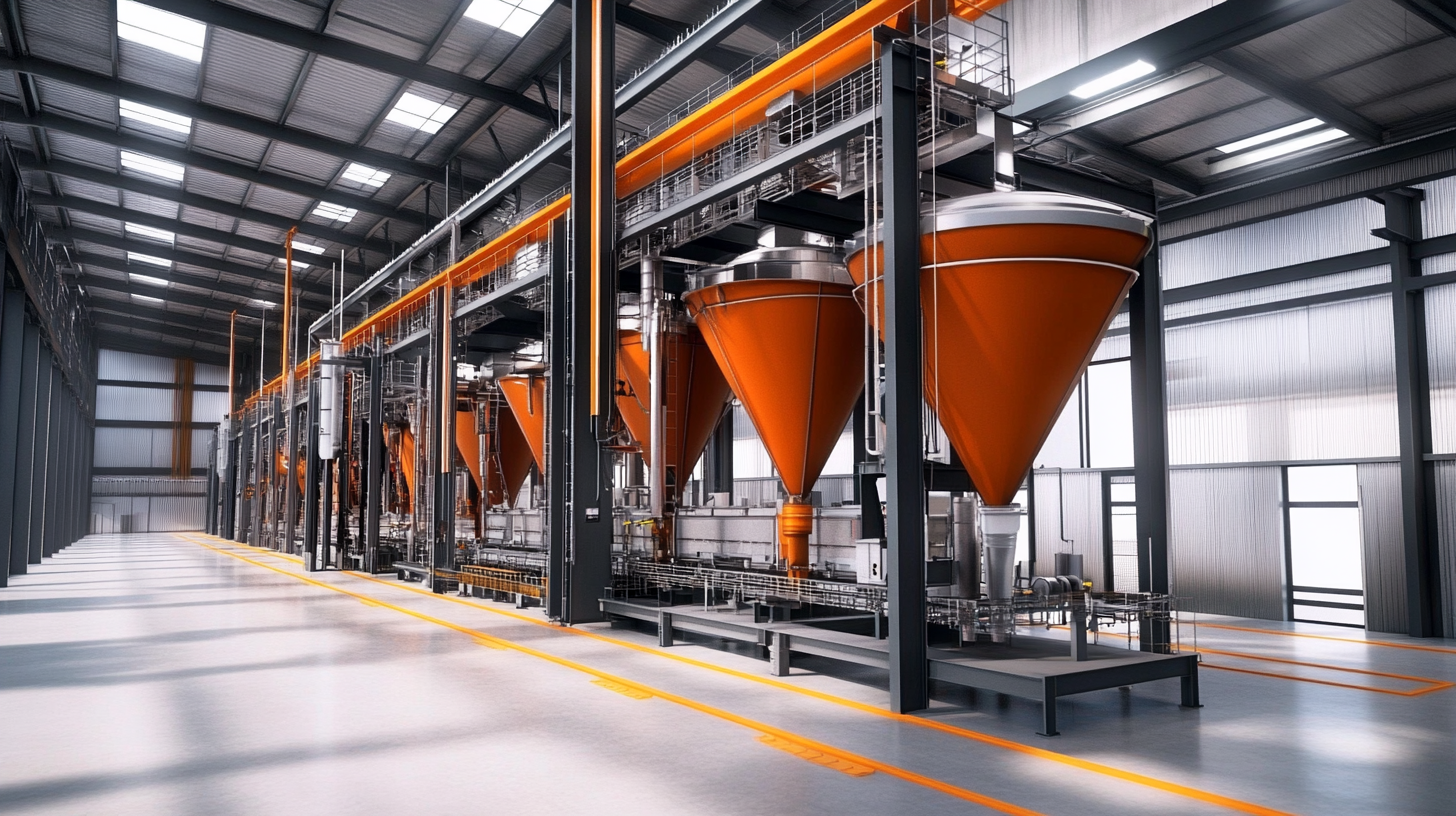
In recent years, China's manufacturing sector has displayed remarkable resilience, particularly in the face of growing trade tensions and tariff challenges with the United States. Despite these obstacles, the industry continues to thrive, showcasing innovative solutions that cater to both domestic and international markets. A key player in this robust growth is the Mixing Machine Industrial sector, which has adapted to the changing economic landscape by enhancing product efficiency and quality. The demand for advanced mixing machines has surged, driven by the need for precision in various industries, from pharmaceuticals to food processing. As manufacturers navigate the complexities of tariffs and supply chain disruptions, they are increasingly turning to cutting-edge mixing technologies to maintain their competitive edge. This blog will explore how China’s manufacturing landscape, particularly in mixing machines, is not just surviving but flourishing, ultimately shaping the future of industrial production despite the ongoing challenges.

China's manufacturing sector continues to showcase remarkable resilience despite the mounting pressures from US tariffs. Recent reports indicate that in April, China's factory output rose by 6.1%, surpassing expectations and highlighting the effectiveness of government support measures designed to stabilize the economy. Despite softening domestic consumption, which increased by 5.1%, the overall industrial growth signals a robust response to external challenges.
Tips for businesses operating in this environment include diversifying supply chains to mitigate risks. Companies should consider exploring alternative markets and local suppliers to maintain flexibility amidst tariff fluctuations. Additionally, investing in technology and innovation can enhance production efficiency, ensuring that manufacturers remain competitive and responsive to global market demands.
Moreover, leveraging government initiatives aimed at economic support can provide additional cushioning against external shocks. Staying informed about policy changes and adapting strategies accordingly will be crucial for businesses navigating these turbulent waters. With the right approaches, manufacturers can thrive even as they face ongoing challenges from international trade dynamics.
Advanced mixing machine solutions play a pivotal role in enhancing the efficiency and productivity of Chinese manufacturing, particularly in the face of ongoing tariff challenges imposed by the United States. According to a report by Market Research Future, the global mixing machine market was valued at approximately $5 billion in 2020 and is projected to grow at a CAGR of 6.5% between 2021 and 2027. This growth is partly driven by the increasing demand for high-quality materials, where advanced mixing technology significantly improves product consistency and reduces waste.
In China, the manufacturing sector has seen a remarkable transformation thanks to innovations in mixing machinery. A study by Industry Research estimated that the Chinese mixing equipment market alone is expected to reach $1.2 billion by 2025. The integration of automation and smart technology in mixing processes allows manufacturers to streamline operations, ensuring better resource management while increasing output. As manufacturers look to mitigate the impact of tariffs, investing in state-of-the-art mixing machines offers a pathway to not only maintain competitiveness but also enhance product quality, reinforcing China’s position in the global manufacturing arena.
China's manufacturing sector has shown remarkable resilience despite the ongoing challenges posed by US tariffs. According to a report by the National Bureau of Statistics of China, the manufacturing Purchasing Managers' Index (PMI) remained above the threshold of 50, indicating expansion. In September 2023, the PMI recorded 51.3, reflecting steady growth and a strong recovery trajectory. This data reinforces the notion that Chinese manufacturers have successfully adapted their strategies, optimizing their supply chains and enhancing operational efficiencies to mitigate the impact of tariffs.
Moreover, investment in automation and advanced manufacturing technologies has surged. A report from GlobalData projected that China's spending on industrial automation and controls will exceed $50 billion by the end of 2023, an increase of 12% compared to the previous year. This strategic shift not only boosts productivity but also allows manufacturers to maintain competitiveness in the global market, even when facing external pressures. With such developments, China has effectively positioned itself as a leader in manufacturing innovation, demonstrating that it can thrive amid economic hurdles.

In the face of escalating trade tensions and tariffs, China's manufacturing sector is not only surviving but thriving, driven by a wave of innovative solutions. As highlighted in recent analyses, China's strategic investments in advanced industries, particularly in technology and manufacturing, are positioning the nation as a global leader in innovation. The government's emphasis on developing domestic capabilities has enhanced the research and development landscape, enabling local companies to innovate continuously and improve their competitive edge.
Key sectors such as green energy, artificial intelligence, and advanced manufacturing are witnessing significant growth as China pivots towards a more innovation-driven economy. With a strong focus on emerging technologies, Chinese firms are transforming challenges into opportunities, leveraging their innovation capabilities to enhance productivity and efficiency. This momentum in technological advancement is crucial as the global trade environment evolves, particularly in industries like semiconductors, where China's rapid developments are narrowing the gap with global leaders. The resilience and adaptability of China’s manufacturing sector serve as a testament to the country's shifting economic landscape amidst ongoing international rivalry.

China's manufacturing industry has demonstrated remarkable resilience amidst the ongoing tariff challenges posed by the US. As companies adapt to the pressures of these tariffs, they are also innovating in ways that enhance their competitiveness on the global stage. This includes the development of state-of-the-art mixing machines, which are integral to various sectors, from food production to pharmaceuticals. These advances not only streamline operations but also improve product quality, setting a new standard in manufacturing processes.
Looking ahead, the potential of China's manufacturing sector extends far beyond mere adaptation to tariffs. The government's commitment to technology and innovation positions it favorably for future growth. Investments in smart manufacturing and automation technologies are paving the way for increased efficiency and productivity. As Chinese manufacturers continue to embrace these advancements, they are likely to open new markets and opportunities, further solidifying their role as leaders in the global manufacturing landscape. This strategic focus on innovation and quality deepens China's competitive edge and may ultimately redefine the future of manufacturing worldwide.
